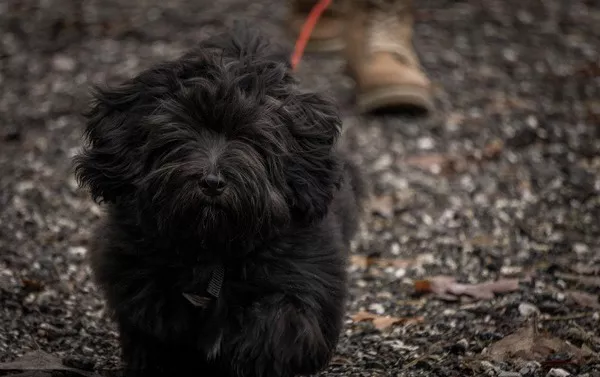The American Foxhound, known for its elegant appearance and energetic personality, is a popular breed of dog. As a breed initially developed for hunting, they are characterized by endurance, intelligence, and sociability. However, one common question potential dog owners often ask about this breed is: Can American Foxhounds be left alone?
In this article, we will explore the characteristics of the American Foxhound, their temperament, and factors that influence their ability to be left alone. By understanding the breed’s needs, potential challenges, and helpful tips for ensuring their well-being while alone, you can make informed decisions on how best to care for an American Foxhound in your home.
1. What Is the American Foxhound
The American Foxhound is a breed that traces its origins back to the early 18th century in the United States. Developed by breeders such as George Washington, it is primarily known for its role as a hunting dog. American Foxhounds were specifically bred to pursue foxes, and their strong hunting instincts and stamina make them excellent at this task. They are a breed that requires physical and mental stimulation to remain happy and healthy.
The American Foxhound is a medium to large-sized dog with a sleek and muscular build. Their coat is short, dense, and weather-resistant, and they typically have a tri-color (black, white, and tan) or bi-color (white and tan) coat. These dogs are known for their calm, gentle demeanor, and affectionate nature, particularly toward their families. Despite their independent hunting background, American Foxhounds form strong bonds with their human companions and can be loving and devoted pets.
2. Understanding the Needs of an American Foxhound
Before we address whether an American Foxhound can be left alone, it is crucial to understand their needs. Every dog, regardless of breed, has specific requirements for physical, emotional, and mental well-being.
Physical Needs
American Foxhounds are active dogs, originally bred to run long distances while tracking game. As a result, they have significant exercise requirements. These dogs need plenty of physical activity to stay healthy, including daily walks, runs, and playtime. Without enough exercise, they may become bored, anxious, or even destructive. A Foxhound that doesn’t receive enough physical stimulation may start digging, chewing, or engaging in other destructive behaviors to burn off excess energy.
Mental Needs
American Foxhounds are intelligent dogs that were bred to make decisions on their own in the field. They are used to working independently as part of a hunting pack, which means they can sometimes be a bit stubborn or independent in their behavior. This intelligence and independence require mental stimulation to keep them engaged. Regular training, puzzle toys, and problem-solving games can help provide the mental enrichment they need.
Emotional Needs
As social dogs, American Foxhounds thrive on human interaction and companionship. They are known to be affectionate with their families, and they are often described as friendly, even-tempered, and good with children. However, they can also experience separation anxiety if they are left alone for extended periods of time. This emotional need for companionship and affection is one of the key factors to consider when determining whether a Foxhound can be left alone.
3. Can an American Foxhound Be Left Alone?
The short answer is: it depends. Whether or not an American Foxhound can be left alone largely depends on the individual dog’s temperament, training, and the amount of time they are left alone. However, we can break it down into several important factors that will give a clearer understanding of the breed’s capacity to be left alone.
Age and Experience
Young puppies and older dogs may have more difficulty being left alone than adult dogs. Puppies, especially during their early months, require a lot of attention, training, and socialization. They may struggle to be left alone for even short periods due to their curiosity and need for guidance.
On the other hand, older Foxhounds might be less energetic than younger dogs and may enjoy more relaxation time. However, they can still suffer from separation anxiety, which might lead to destructive behaviors. A Foxhound that is used to being alone and has been well-trained to be independent will likely fare better in situations where they must be left alone.
Training and Socialization
Training plays a significant role in helping an American Foxhound adapt to being left alone. A well-trained Foxhound, who has learned to be calm and confident when left alone, is less likely to experience distress. Socialization also helps them become accustomed to being apart from their human companions. Gradually increasing the time a dog spends alone, starting from short periods, is an effective way to train them to be more independent.
Training should focus on both obedience commands and crate training. A crate can offer a safe space for an American Foxhound while they are left alone. With proper crate training, a Foxhound can feel secure and comfortable in a confined area, helping to alleviate stress. However, it’s important to ensure that the crate is a positive environment and not a form of punishment.
Separation Anxiety
Separation anxiety is a common problem among dogs, and American Foxhounds are no exception. These dogs can form strong attachments to their families and may become anxious or distressed when left alone. Signs of separation anxiety include:
- Excessive barking or whining
- Destructive behavior, such as chewing furniture or digging
- Escaping from a fenced yard or kennel
- Excessive drooling or panting
- Accidents inside the house
Separation anxiety can be particularly challenging to manage and may require professional help from a dog behaviorist or trainer. If an American Foxhound displays signs of separation anxiety, it is essential to address the issue early to prevent further behavioral problems.
Exercise and Mental Stimulation
As previously mentioned, American Foxhounds need plenty of physical and mental exercise. If you need to leave your Foxhound alone for a few hours, it is important to ensure that they have had a sufficient amount of exercise beforehand. A long walk, a run, or playtime in the yard can help tire them out and make them more likely to relax while you are away.
Mental stimulation is also important. Providing puzzle toys, treat-dispensing toys, or safe chew items can keep your Foxhound occupied and prevent boredom. Interactive toys, such as those that hide treats, can keep their mind engaged and help reduce anxiety.
Length of Time Alone
The length of time that an American Foxhound can be left alone depends on their individual temperament and training. In general, Foxhounds should not be left alone for long periods. Ideally, an American Foxhound should not be left alone for more than four to six hours a day. If you work long hours or are frequently away from home, you may want to consider alternative solutions, such as hiring a dog walker or using a pet sitter.
Long periods of loneliness can lead to destructive behaviors, especially if the dog is not accustomed to being left alone. If your schedule requires you to be away from home for longer periods, it’s important to provide opportunities for your Foxhound to socialize, exercise, and engage in mental stimulation.
4. Tips for Leaving an American Foxhound Alone
If you find it necessary to leave your American Foxhound alone for short or extended periods, there are several tips you can follow to ensure their well-being:
1. Ensure Proper Exercise
Before leaving your Foxhound alone, make sure they have had an opportunity to exercise. A good walk, run, or play session can help burn off excess energy and make them more relaxed when left alone.
2. Provide Mental Stimulation
As intelligent dogs, Foxhounds need mental stimulation. Offer puzzle toys, treat-dispensing toys, or safe chew items to keep their minds active while you’re away. You can also leave them with interactive toys that require problem-solving.
3. Create a Safe and Comfortable Space
Designate a specific area for your Foxhound to be while you’re gone. A crate or a secure, dog-proofed room can give your dog a sense of safety. Ensure the space is free from any hazards, and make sure they have access to water, bedding, and a few favorite toys.
4. Establish a Routine
Dogs thrive on routine. By leaving and returning home at consistent times, you can help your Foxhound adjust to being alone. Regularity will help reduce anxiety and make the separation less stressful for them.
5. Consider a Dog Walker or Pet Sitter
If you need to be away for longer periods, consider hiring a dog walker or pet sitter. A dog walker can provide a break during the day for your Foxhound to stretch their legs and get some fresh air. A pet sitter can offer companionship and care in your absence.
6. Gradually Increase Alone Time
If your Foxhound struggles with being alone, gradually increase the time they spend alone. Start with short periods and slowly build up to longer durations. This gradual approach can help your dog become more comfortable with being alone.
Conclusion
The American Foxhound is a wonderful breed known for its friendly and affectionate nature. However, they do have specific needs that must be met to keep them happy and healthy, especially when it comes to being left alone. Their exercise requirements, mental stimulation needs, and tendency to experience separation anxiety can make leaving them alone a challenge.
Whether or not an American Foxhound can be left alone depends on their age, training, exercise, and the amount of time they are left alone. With proper preparation, training, and the right environment, an American Foxhound can learn to be independent and comfortable during your absence.
If you plan to adopt an American Foxhound, it’s important to consider your lifestyle and whether you can provide the time, attention, and care this breed needs. With the right approach, your Foxhound will thrive and continue to be a loyal, loving companion in your home.
Related Topics:
























